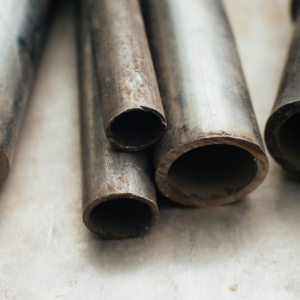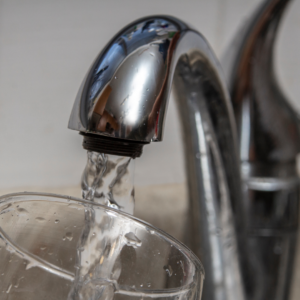The Dangers of Lead in Drinking Water: What You Can Do to Prevent Exposure
As a homeowner, you should be aware of the potential dangers of lead in your drinking water, especially if you live in an older house. Lead can cause serious health problems, especially for children and pregnant women.
The Dangers of Lead in Drinking Water
 Lead poisoning is a serious health risk that can have severe consequences. Exposure to lead can cause damage to the brain and nervous system, leading to developmental and behavioral problems in children and high blood pressure, kidney damage, and infertility in adults.
Lead poisoning is a serious health risk that can have severe consequences. Exposure to lead can cause damage to the brain and nervous system, leading to developmental and behavioral problems in children and high blood pressure, kidney damage, and infertility in adults.
Understanding how lead enters our environment, particularly our drinking water, is critical to reducing exposure.
Lead can enter the water supply through corroded pipes, fixtures, and solder. Homes built before 1986 are likelier to have lead pipes, fixtures, and solder, which can release lead into the water. Solder is a metal alloy that joins two metal surfaces by melting them and then allowing them to cool and harden, creating a bond between them. It is commonly used in electronics and plumbing to create strong and durable connections. Solder is typically made from a mixture of metals, such as tin and lead or tin and silver. However, lead-free options are becoming increasingly popular due to health and environmental concerns.
Water sitting in these pipes for several hours or overnight is more likely to contain lead.
Water treatment plants can add chemicals to prevent corrosion and reduce lead levels in drinking water. However, these chemicals can be ineffective or reduce water quality.
Who is at Risk?
People living in older homes with pipes, fixtures, and solder-containing lead are at the highest risk of lead poisoning. Children under the age of six, pregnant women, and nursing mothers are also at increased risk, as lead exposure can have severe developmental consequences for fetuses and young children.
People who work in industries that use lead, such as construction, plumbing, and battery manufacturing, are more likely to be exposed to lead and have a higher risk of lead poisoning.
Finally, people who live near industrial sites, waste incinerators, and hazardous waste sites are also at increased risk, as these sites can release lead into the air and soil, contaminating the surrounding environment.
How to Prevent Lead Poisoning from Drinking Water
 Detecting lead in drinking water can be a cause for concern as it is a toxic metal that can harm human health, especially for children and pregnant women. If you suspect your drinking water contains lead, it is important to take immediate action. The first step is to get your water tested by a certified laboratory. They can provide accurate results and help you identify the source of the lead contamination.
Detecting lead in drinking water can be a cause for concern as it is a toxic metal that can harm human health, especially for children and pregnant women. If you suspect your drinking water contains lead, it is important to take immediate action. The first step is to get your water tested by a certified laboratory. They can provide accurate results and help you identify the source of the lead contamination.
If lead is detected in your drinking water, there are several steps you can take to minimize your exposure. First, you can install a certified point-of-use water filter to remove lead. This can be a simple and cost-effective solution to reduce your exposure. Additionally, you can run your water for a few minutes before using it, especially if it has been sitting in your pipes for several hours. This can help flush out any lead accumulated in your plumbing system.
Preventing lead poisoning is critical to maintaining good health, especially for children. Best practices for preventing lead poisoning include ensuring your home is lead-safe, avoiding lead-based paint and lead-contaminated dust, and checking that your drinking water does not contain elevated lead levels. It is also essential to wash your hands regularly, especially before eating, as this can help reduce the risk of ingesting lead.
Protecting Your Family From Lead Poisoning
Protecting children from lead poisoning is a public health issue that requires attention. Lead exposure can cause a variety of health problems, including developmental delays, learning difficulties, and behavior problems. Children are particularly vulnerable to lead poisoning because their bodies absorb lead more quickly than adults.
Parents, caregivers, and policymakers must prevent lead exposure in children to make sure they have the best chance to grow up healthy and strong.
One step that can be taken to prevent lead exposure is to use safe alternatives to lead pipes. While lead pipes were once a common material used in plumbing, they can leach lead into drinking water over time. This can be particularly problematic in older homes and buildings with lead pipes. However, there are safe alternatives to lead pipes that can be used instead. For example, copper pipes are a durable and safe option for most plumbing applications. PVC pipes can also be used for specific applications like drainage systems. By replacing lead pipes with safe alternatives, we can help protect children and adults from the adverse health effects of lead exposure.
Here are a few steps to take if you suspect lead poisoning:
- Contact your healthcare provider if you suspect lead poisoning in yourself or a family member
- Get a blood test to check for lead levels in the body
- If lead poisoning is confirmed, identify and remove the source of lead exposure
- Follow the treatment plan prescribed by your healthcare provider
- Take steps to prevent further exposure to lead
Take Action Against Lead Poisoning
 Lead contamination in drinking water is a serious issue that requires immediate attention. The dangers of lead poisoning cannot be overstated, and individuals and communities must take action to prevent it.
Lead contamination in drinking water is a serious issue that requires immediate attention. The dangers of lead poisoning cannot be overstated, and individuals and communities must take action to prevent it.
Stay informed about lead contamination and its effects. The Environmental Protection Agency and the Centers for Disease Control and Prevention are both excellent resources for information and resources related to lead poisoning.
Contact an environmental consulting company if you suspect lead in your water. If high levels are detected, you can protect yourself and your family by using a water filtration system or replacing old pipes and plumbing fixtures. Doing so can ensure you and your loved ones access clean and safe drinking water.

